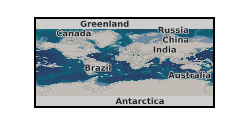Hydrothermal fluid modelling for pH in alkaline hosts (NERC grant NE/M010848/1)
This study explored the links between host rock composition, hydrothermal fluid composition (particularly pH), and the resulting ore minerals and deposits. The progressive water–rock reaction between 1 kg of initially acidic, condensed magmatic vapour and a series of different rock compositions was modelled with CHILLER (Reed, 1982, Reed, 1998), and follows the design of the water-rock reactions of Reed (1997). The thermodynamic data used in the numerical experiments are from the database SOLTHERM.H08 (Reed and Palandri, 2013). Data and calculations within SOLTHERM include: equilibrium constants calculated with SUPCRT92 (Johnson et al., 1992); mineral thermodynamic data for silicates, oxides, hydroxides, carbonates, gases (Holland and Powell, 1998) and sulphides (Shock, 2007). Mineral solid solutions are represented by end-member compositions that are mixed using an ideal multisite mixing scheme. Rock compositions used in the modelling represent a sub-alkaline andesitic control, and a number of alkaline compositions associated with world-class Au deposits. All starting rock compositions are derived from whole rock geochemical data, and have been recalculated to a 100% basis without TiO2 or P2O5 (excluded as minor phases with little to no effect on hydrothermal mineral assemblages). Original total Fe (as Fe2O3) has been recalculated to FeO and Fe2O3 using the method of Müller et al. (2001). The andesite is representative of calc-alkaline, silica saturated compositions, and is derived from and discussed in detail in Reed (1997). The Luise “Phonolite” (a trachyandesite using the Le Maitre et al., 1989 TAS plot; Fig. 1) and Trachyandesite are from the vicinity of the Ladolam epithermal Au deposit, Lihir Island, Papua New Guinea (Müller et al., 2001). The Porgera Mugearite and Feldspar Porphyry represent unaltered host rock compositions (Richards, 1990) from the Porgera Au deposit (Papua New Guinea). The Cripple Creek Phonolite is part of the host suite to the Cripple Creek epithermal Au deposit, Colorado (Kelley et al., 1998). The Savo trachyte (Smith et al., 2009) represents a typical host rock of the active hydrothermal system (Smith et al., 2010), on Savo island, Solomon Islands. With the exception of the Andesite, all compositions are alkaline using the total alkali versus silica definition of Irvine and Baragar (1971). The Savo sample is not associated with known epithermal Au mineralisation; this composition was selected on the grounds that it represents an evolved (SiO2-rich) silica-saturated, alkaline composition. The initial fluid composition is based on a condensate from Augustine volcano (Symonds et al., 1990) mixed 1:10 with pure water (Reed, 1997; Table 2). A single starting fluid for all models was chosen so as to demonstrate the effect of host rock alone.

non geographic dataset
:
http://data.bgs.ac.uk/id/dataHolding/13607567
English
Geoscientific information
GEMET - INSPIRE themes, version 1.0:
BGS Thesaurus of Geosciences:
NGDC Deposited Data
Tellurium minerals
Epithermal deposits
Tellurium
pH value
Gold
Hydrothermal fluids
Free:
Free:
NERC_DDC
creation: 2019-12-17
2015-06-01
-
2019-11-30
University of Leicester
Dr Daniel Smith
University Road,
Leicester,
LE1 7RH,
United Kingdom
email:
not available
Role: point of contact
University of Leicester
Dr Daniel Smith
University Road,
Leicester,
LE1 7RH,
United Kingdom
email:
not available
Role: principal investigator
Data Quality
Model inputs were derived from the academic literature. The progressive water–rock reaction between 1 kg of initially acidic, condensed magmatic vapour and a series of different rock compositions was modelled with CHILLER (Reed, 1982, Reed, 1998), and follows the design of the water-rock reactions of Reed (1997). The thermodynamic data used in the numerical experiments are from the database SOLTHERM.H08 (Reed and Palandri, 2013). Data and calculations within SOLTHERM include: equilibrium constants calculated with SUPCRT92 (Johnson et al., 1992); mineral thermodynamic data for silicates, oxides, hydroxides, carbonates, gases (Holland and Powell, 1998) and sulphides (Shock, 2007). Mineral solid solutions are represented by end-member compositions that are mixed using an ideal multisite mixing scheme.
INSPIRE Implementing rules laying down technical arrangements for the interoperability and harmonisation of Geology
Commission Regulation (EU) No 1089/2010 of 23 November 2010 implementing Directive 2007/2/EC of the European Parliament and of the Council as regards interoperability of spatial data sets and services
Constraints
The copyright of materials derived from the British Geological Survey's work is vested in the Natural Environment Research Council [NERC]. No part of this work may be reproduced or transmitted in any form or by any means, or stored in a retrieval system of any nature, without the prior permission of the copyright holder, via the BGS Intellectual Property Rights Manager. Use by customers of information provided by the BGS, is at the customer's own risk. In view of the disparate sources of information at BGS's disposal, including such material donated to BGS, that BGS accepts in good faith as being accurate, the Natural Environment Research Council (NERC) gives no warranty, expressed or implied, as to the quality or accuracy of the information supplied, or to the information's suitability for any use. NERC/BGS accepts no liability whatever in respect of loss, damage, injury or other occurence however caused.
Available under the Open Government Licence subject to the following acknowledgement accompanying the reproduced NERC materials "Contains NERC materials ©NERC [year]"
The dataset is made freely available for access, e.g. via the Internet. Either no third party data / information is contained in the dataset or BGS has secured written permission from the owner(s) of any third party data / information contained in the dataset to make the dataset freely accessible.
Metadata about metadata
9b8a282f-e19c-682b-e054-002128a47908
British Geological Survey
Environmental Science Centre,Keyworth,
NOTTINGHAM,
NG12 5GG,
United Kingdom
tel: +44 115 936 3100
email:
enquiries@bgs.ac.uk
Role: point of contact
2024-04-17
